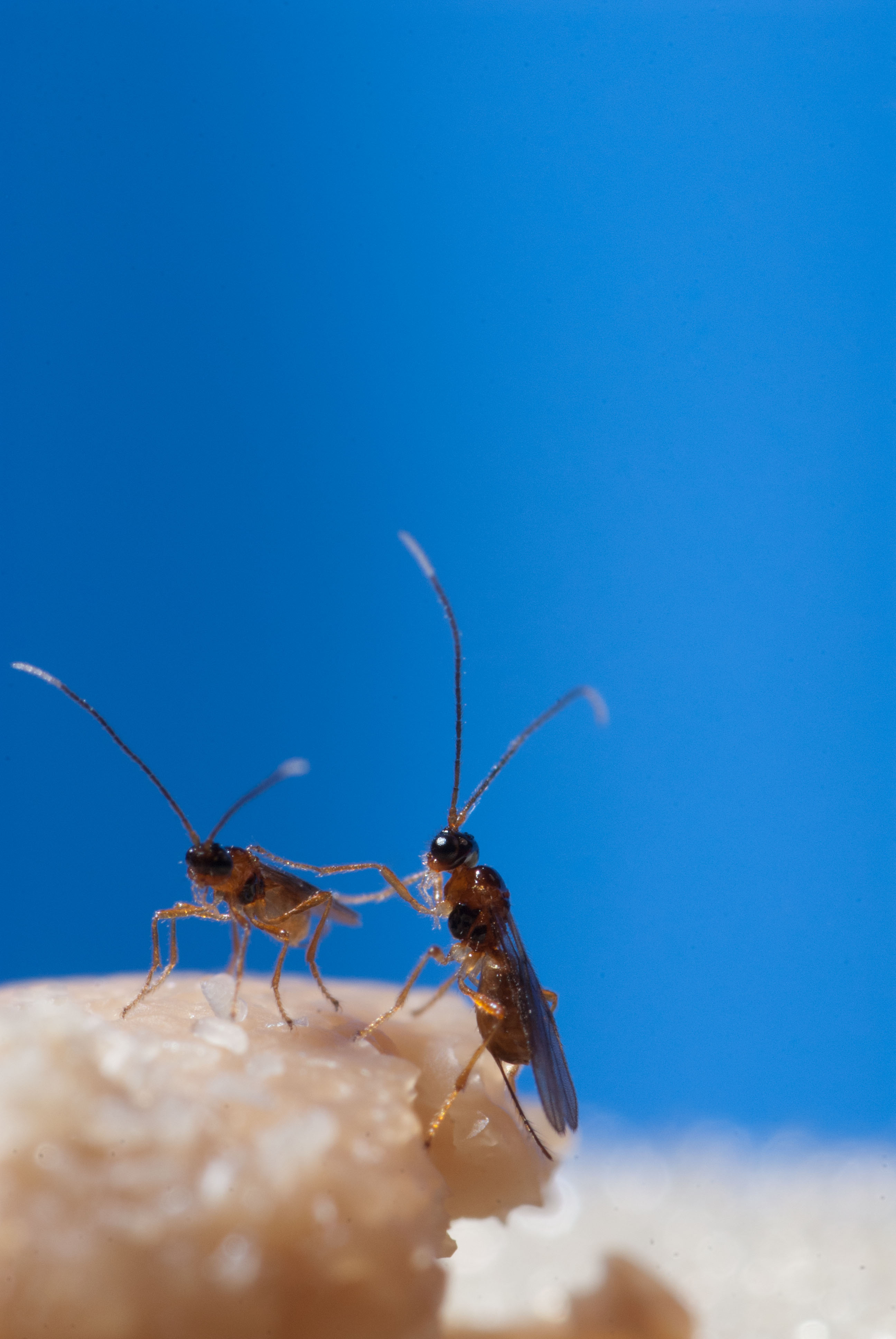New paper published in Molecular Ecology
26/03/21 06:18 Category: Papers
Thrilled to see this work is finally out in Molecular Ecology!
A single QTL with large effect is associated with female functional virginity in an asexual parasitoid wasp
https://doi.org/10.1111/mec.15863
During the transition from sexual to asexual reproduction, a suite of reproduction‐related sexual traits become superfluous, and may be selected against if costly. Female functional virginity refers to asexual females resisting to mate or not fertilizing eggs after mating. These traits appear to be among the first that evolve during transitions from sexual to asexual reproduction. The genetic basis of female functional virginity remains elusive. Previously, we reported that female functional virginity segregates as expected for a single recessive locus in the asexual parasitoid wasp Asobara japonica. Here, we investigate the genetic basis of this trait by quantitative trait loci (QTL) mapping and candidate gene analyses. Consistent with the segregation of phenotypes, we found a single QTL of large effect, spanning over 4.23 Mb and comprising at least 131 protein‐coding genes, of which 15 featured sex‐biased expression in the related sexual species Asobara tabida. Two of the 15 sex‐biased genes were previously identified to differ between related sexual and asexual population/species: CD151 antigen and nuclear pore complex protein Nup50. A third gene, hormone receptor 4, is involved in steroid hormone mediated mating behaviour. Overall, our results are consistent with a single locus, or a cluster of closely linked loci, underlying rapid evolution of female functional virginity in the transition to asexuality. Once this variant, causing rejection to mate, has swept through a population, the flanking region does not get smaller owing to lack of recombination in asexuals.

A single QTL with large effect is associated with female functional virginity in an asexual parasitoid wasp
https://doi.org/10.1111/mec.15863
During the transition from sexual to asexual reproduction, a suite of reproduction‐related sexual traits become superfluous, and may be selected against if costly. Female functional virginity refers to asexual females resisting to mate or not fertilizing eggs after mating. These traits appear to be among the first that evolve during transitions from sexual to asexual reproduction. The genetic basis of female functional virginity remains elusive. Previously, we reported that female functional virginity segregates as expected for a single recessive locus in the asexual parasitoid wasp Asobara japonica. Here, we investigate the genetic basis of this trait by quantitative trait loci (QTL) mapping and candidate gene analyses. Consistent with the segregation of phenotypes, we found a single QTL of large effect, spanning over 4.23 Mb and comprising at least 131 protein‐coding genes, of which 15 featured sex‐biased expression in the related sexual species Asobara tabida. Two of the 15 sex‐biased genes were previously identified to differ between related sexual and asexual population/species: CD151 antigen and nuclear pore complex protein Nup50. A third gene, hormone receptor 4, is involved in steroid hormone mediated mating behaviour. Overall, our results are consistent with a single locus, or a cluster of closely linked loci, underlying rapid evolution of female functional virginity in the transition to asexuality. Once this variant, causing rejection to mate, has swept through a population, the flanking region does not get smaller owing to lack of recombination in asexuals.
